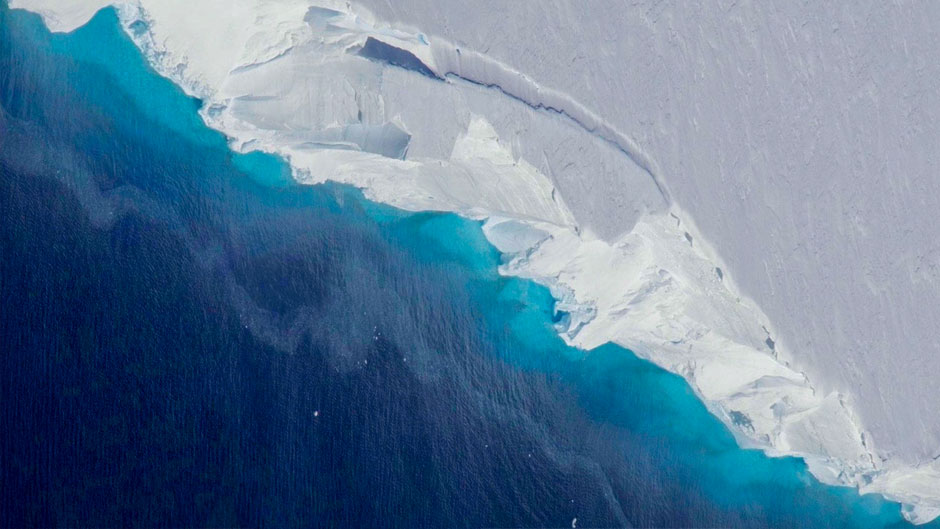A new study led by NASA scientists reveals a cavity inside the Thwaites Glacier in West Antarctica, which is about two-thirds the area of Manhattan and large enough to hold 14 billion tons of ice. The ice is melting faster than expected, the study shows. Researchers now fear the whole glacier, about the size of Florida, could be at risk of calving off into the sea. News@TheU talked with Amy Clement, professor at the University of Miami Rosenstiel School of Marine and Atmospheric Science and an expert on climate modeling, to learn more about what this could mean for global sea level rise.
Why is the melting of the cavity so alarming?
The big issue is that there are ice sheets in the Thwaites Glacier that are grounded below sea level, so it’s exposed to relatively warm seawater from below. Once it starts melting, it can melt catastrophically. There’s been a big effort to monitor this glacier and other glaciers in that part of Antarctica because much of the west Antarctic ice sheet is behind this glacier, so if it melts significantly, the idea is that the ice that is behind it can be immobilized as well.
In what way will this impact sea level rise?
Most of the available freshwater in the planet is tied up in the Antarctic ice sheet. If it melts, then it raises sea level significantly. We didn’t know much about what was going on below the surface, but NASA’s study shows there’s been a lot of recent work with data and radar observations flying over the glaciers in order to get a profile of what’s occurring. I think the big innovation we can learn from this study is the new ability to look into the glacier and see what’s happening below. It gives scientists a more complete picture of how much melting is actually happening.
How does this affect Florida?
Florida—and Miami in particular—have this unique geologic feature, which is that we have a ridge of high elevation that is about 6 meters. We are currently heading very quickly to a warmer world, and if a two degree warmer world has several meters of sea level rise, that’s very significant for all coastal cities. Miami is one place that is very vulnerable because we don’t have any high ground to retreat to. In all, this study gives scientists another piece of the puzzle to figure out how quickly ice sheets are melting, and from this study you can interpret that they are melting a lot quicker than previously thought.
How quickly is our planet warming?
Greenhouse gasses and soot (a result of coal burning) in the atmosphere play a key role in the warming of our planet. My research is focused on the human causes of warming along with the climate feedbacks that then triggers. There are still important science questions that need to be answered, but it’s indisputable that if we reduce our greenhouse gas emissions the Earth will warm less quickly.
How soon can people see the effects of sea level rise?
We’re already seeing the effects of human-caused sea level rise. There’s no doubt that the frequency of king tides here in South Florida is due to the fact that sea level is just higher than it was at any time in the history of settlements of South Florida. We’re already seeing that here, and the question is how quickly those additional impacts will make a mark on us. Most of the sea level that we’ve seen so far is due to just thermal expansion of the ocean. When the ocean warms it expands. The expectation is that the melting of these glaciers will ultimately add to that as we move forward in the near future.

